We are reader supported. When you purchase through links on our site, we may earn an affiliate commission. Also, as an Amazon affiliate, we earn from qualifying purchases.
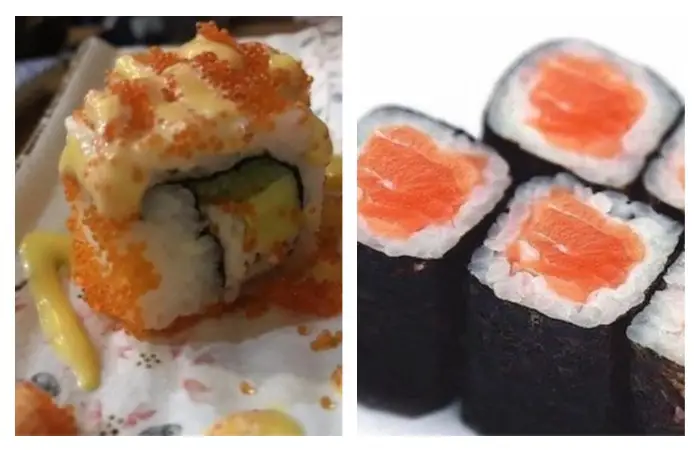
I once took my American friend to a traditional Japanese sushi restaurant and he was taken aback by what he saw. He was surprised to see that the traditional sushi was far from what he is used to eating at the sushi joints in America.
So, what is the difference between Japanese sushi and American sushi? The traditional Japanese sushi has subtle flavors that are well-balanced and they rarely experiment with ingredients and fillings. American sushi, on the other hand, has a mix of strong flavors, bold colors, and a variety of raw fish, cooked meat, veggies, and fruits.
For example, the Philadelphia roll comprises of avocado, salmon, and cream cheese, a combination that you rarely see in traditional sushi. While there’s no denying that Americans love sushi but they have their own way of molding and adapting the traditional dish to suit their tastes. Read on to know more.
Contents
7 Key Differences Between Japanese And American Sushi
1. The choice of rice (Sushi Rice vs. Brown Rice)
In Japan, a lot of attention is paid to the rice and they only use a specific variety of small sized white grained rice, perfectly seasoned with rice vinegar, sugar, and salt. To learn the art of making sushi rice in a cooker or pot like the Japanese, read this article.
Some American restaurants use brown rice in the place of white rice to appeal to the health-conscious masses. Although it might sound like a healthy option, using brown rice changes the flavor and robs sushi of its authenticity.
2. Level of complexity
The Japanese maki is simple and only comprises of vinegared sushi rice, seaweed, one variety of fish and some vegetables (optional). The Americanized sushi rolls, on the other hand, are crammed up with fillings and toppings comprising of fishes, veggies, and almost anything that can go inside a roll.

In the American sushi versions such as Rainbow roll, you have three different types of fish on the top to create an outstandingly colorful appearance. Then there is avocado and other veggies inside. So, the sushi in America is almost similar to their sandwich or burger that can hold anything that is possible.
3. Rolling Technique (Inside vs Outside)
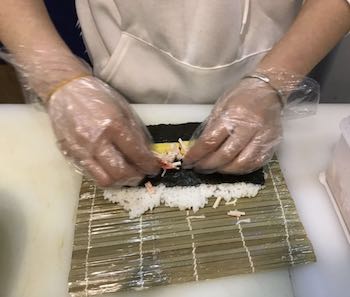
In Japan, the original maki or sushi rolls comprises of seasoned sushi rice, vegetables, and/ or raw fish wrapped in a toasted Nori sheet (seaweed). The American sushi is flipped to roll inside out so that the Nori is hidden inside and you have sushi rice on the outer side.
According to historical sources, the style of wrapping or rolling sushi was invented between 1960-1970 to attract the westerns who did not like the taste of Nori. It was named California roll(see recipe) as most of the sushi patrons were from Los Angeles.
4. Art of learning to make sushi
The Japanese revere their tradition and sushi is an important part of the culture. The sushi chefs are held in high regard because they achieve that title of ‘level 5 chef’ after years of stressful and intense training. Before an apprentice learns how to make nigiri sushi, he has to practice how to make perfect fish slices, prepare sushi rice, and use the condiments in the right proportion.
The American culinary schools on the other hand offer sushi-making classes where people can learn how to make sushi. The techniques of slicing fish, cutting vegetables, and making sushi rice can be learned in just 3 months in the Sushi Institute of America. They usually issue a certificate after the completion of the course.
5. Size matters (small, large or extra large)
Japanese sushi is just a one-bite style of food. The sushi roll is typically cut into 6 pieces that are small enough to be eaten in just one bite. As per the traditional norms, sushi must include just one fish or vegetable to ensure that you can enjoy its flavor to the fullest.
The Americanized sushi does not mind mixing different aromas and overriding flavors to make a gigantic sushi roll. They may contain more than 3 types of fillings and several other toppings over sushi rice. The fat sushi rolls can be cut into 8 pieces or even more. It’s difficult to eat these pieces in a single bite.
Related article: How Many Pieces Of Sushi Is A Serving? (Portion)
6. Style of hand rolls
In Japan, the hand rolls or temaki is cone-shaped but they are still made using nori or seaweed sheets to ensure that the basic ingredients remain the same. It includes one type of fish and maybe one vegetable (julienned) as filling,
In the grocery stores or supermarket sushi corners in America, you can see weird creations where the sushi rice and ingredients are incorporated in waffle cones. Furthermore, they may have different types of fish, vegetables, and cheese popping out of the cone.
7. Balancing the flavor
The sushi chefs in Japan give due importance to balancing the delicate flavors between sushi rice and fish. They are used in a way to ensure that you can enjoy the flavors of both without any one overpowering the other.
If you have eaten traditional Japanese sushi before, you can easily tell the difference in American rolls. The latter lacks the strong vinegar flavor that Japanese sushi is known for. This imbalance in flavor leads to sushi with fish or vegetables suppressing the taste of rice.
5 Things You Can Only Find In American Sushi
1. Fried Sushi
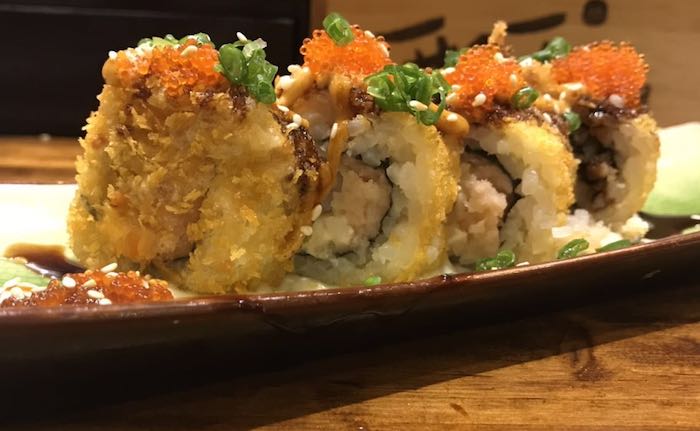
In Japan, you will never find fried sushi, but it is an exotic delicacy in America. The sushi roll is prepared in the same way but the pieces are then deep-fried like tempura. The most common types of fried sushi rolls are Eel rolls, California rolls, and Korean BBQ rolls. Breadcrumbs may be used as coatings to add crispiness to the rolls.
2. Spicy Tuna Roll
In the past, westerner did not like the taste of tuna but when mixed with zesty sauce and rolled into a delicious sushi roll with condiments, the spicy tuna roll became an instant hit. Today, you can find this style of sushi in almost every sushi joint, and they are popular as quick takeaways. See more
3. Avocado Sushi
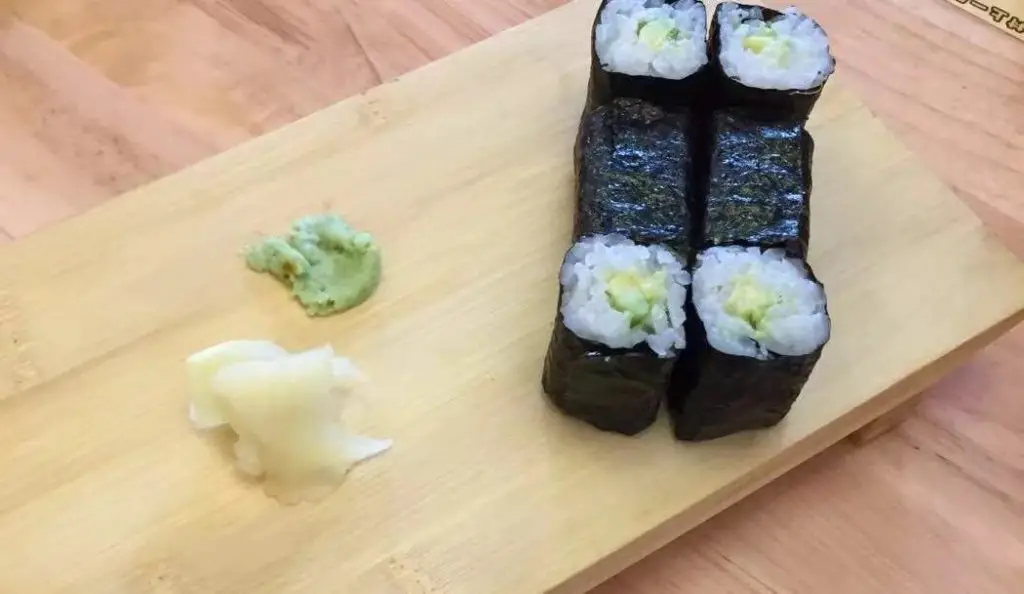
The Japanese are known for keeping their sushi simple and their choice of vegetables include cucumbers, as in cucumber rolls. In America, avocado finds an important place in sushi rolls and several other types of seasonal fruits such as mango and strawberry are also used.
Related Article: Does Traditional Sushi Have Avocado?
4. Sushi with Cheese
When there’s cheese involved, you know it’s America’s favorite food. You will not find sushi filled with cheese in Japan, but it is an extremely favored dish in North America. Sushi filled with cream cheese is known as the Philadelphia sushi roll.
5. California Roll
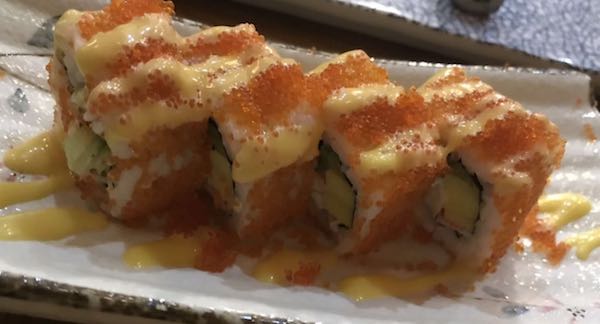
Named in honor of patrons of the city, this typical roll comprises of crab meat or crab-flavored kamaboko, mayonnaise, avocado, nori, sushi rice, and white sesame seeds. To find the full recipe, read this article.
This type of sushi roll is hand rolled using seaweed in the inside-out style so the Nori is hidden inside the rice. You can also find this popular western-style sushi in some restaurants in Japan.
American Sushi Culture vs. Japanese Sushi Culture
It is known that sushi originated in Southeast Asia centuries ago and then it traveled to Japan. It was introduced in America later and the foreigners adapted the dish to suit their taste.
Apart from the difference in cooking/ preparation, the sushi culture and eating etiquettes also vary widely. Let’s take a look at other differences other than preparation style.
Japanese Sushi Bars vs. American Sushi Restaurants
In Japan, you can find sushi bars where you can eat food while watching the chef prepare it right in front of your eyes. It is a part of their culture to interact with the chef, who is friendly and willing to share his knowledge with you. Furthermore, the sushi bars only specialize in sushi so you get high-quality fish and seafood every time.
In America, people eat sushi in Japanese restaurants that may also serve a variety of other dishes. The menu typically contains over 25 different varieties of sushi to choose from. You can find a plethora of fillings and toppings that you don’t usually find in traditional sushi.
Related Article: Is Sushi Chinese Or Japanese Food? (Detailed Explanation)
Japanese Chefs vs. American Chefs
When it comes to sushi, the Japanese chefs are highly revered by customers and fellow chefs who fall under the hierarchy. This is because the chef who attains the highest level usually goes through an extensive training process of 10 years or even more.
If you have ever interacted with a Japanese sushi chef, you will be surprised by their politeness. Despite being a master in their art and being highly respected, they are extremely humble and eager to enrich your experience.
In America, you rarely get to see the sushi chefs, forget about interact with them on the table. They are probably somewhere in the kitchen without much enthusiasm to entertain the customers. Even if you do get an opportunity to talk to the chef, he would probably not be as friendly and compliant.
Related Questions
Do Americans follow sushi etiquettes?
In Japan, both sushi chef and customers are particular about the sushi etiquettes they follow. However, Americans are mostly liberal in this regard. For example, adding extra wasabi or soy sauce is against sushi etiquettes in Japan but Americans don’t mind slathering more sauce on their sushi.
Related Article:Things You Should Know About Eating Sushi
Do the Japanese eat sushi every day?
There is a common misconception that people in Japan eat sushi every day. Sushi is a popular delicacy but the Japanese cuisine is extremely varied. Local people prefer the casual neighborhood sushi joints to the more formal sushi-ya.
Which is better – Japanese sushi or American sushi?
I guess it boils down to an individual’s personal taste and preferences. Sushi traditionalists may condemn the western variations but others may enjoy the creativity. While I prefer my simple cucumber maki roll, I don’t mind treating my taste buds with a Philadelphia roll or Godzilla roll at times.

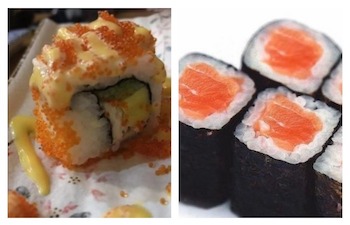
Comments
Pingback: Does Traditional Sushi Have Avocado? - Easy Homemade Sushi
Pingback: Does Japan Have California Rolls? - Easy Homemade Sushi
Pingback: Why is Sushi so Popular? - Easy Homemade Sushi
Pingback: Why Do People Eat Sushi? - Easy Homemade Sushi
Pingback: What's In A Philadelphia Roll And How To Make It - Easy Homemade Sushi